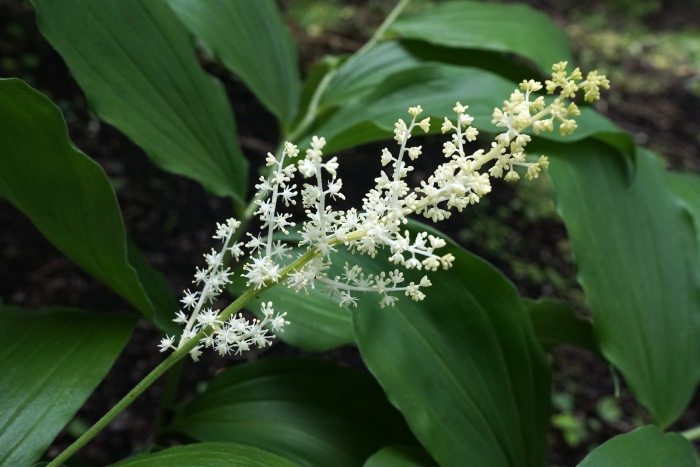Feathery False Lily Of The Valley
(Maianthemum racemosum)
Feathery False Lily Of The Valley (Maianthemum racemosum)
/
/

Plant Image Library
CC BY-SA 2.0












































































Estimated Native Range
Summary
Feathery False Lily of the Valley is valued for its shade tolerance and the delicate appearance of its flowers, which can enhance woodland gardens and naturalized areas. It is often used as a ground cover or in border plantings. The plant prefers consistently moist, well-drained soils rich in organic matter and thrives in part shade, though it can tolerate full shade. It is generally low-maintenance but can be slow to establish. While it spreads by cylindrical rhizomes, it is not typically aggressive or invasive. Gardeners should be aware that it can suffer from leaf spot diseases and is occasionally browsed by deer.CC BY-SA 4.0
Plant Description
- Plant Type: Herb
- Height: 2-3 feet
- Width: 1.5-2 feet
- Growth Rate: Moderate
- Flower Color: Cream, White
- Flowering Season: Spring
- Leaf Retention: Deciduous
Growth Requirements
- Sun: Part Shade
- Water: Medium
- Drainage: Fast, Medium, Slow
Common Uses
Bee Garden, Bird Garden, Border Plant, Drought Tolerant, Erosion Control, Fragrant, Groundcover, Low Maintenance, Street Planting
Natural Habitat
Rich, moist, deciduous and mixed forests, forest edges, and shaded stream banks
Other Names
Common Names: Treacleberry , False Solomon’s-Seal , Feathery False Solomon’s Seal , Feathery False Solomon’s-Seal , Feathery False Lily Of The Vally , Solomon’s Plume , False Solomon’s Seal , False Spikenard , Feathery False Lily-Of-The-Valley , Large False Solomon’s Seal
Scientific Names: Maianthemum racemosum , Smilacina racemosa , Vagnera racemosa , Convallaria racemosa , Smilacina racemosa var. racemosa , Smilacina racemosa var. typica , Unifolium racemosum , Vagnera australis , Polygonastrum racemosum , Tovaria racemosa
GBIF Accepted Name: Maianthemum racemosum (L.) Link